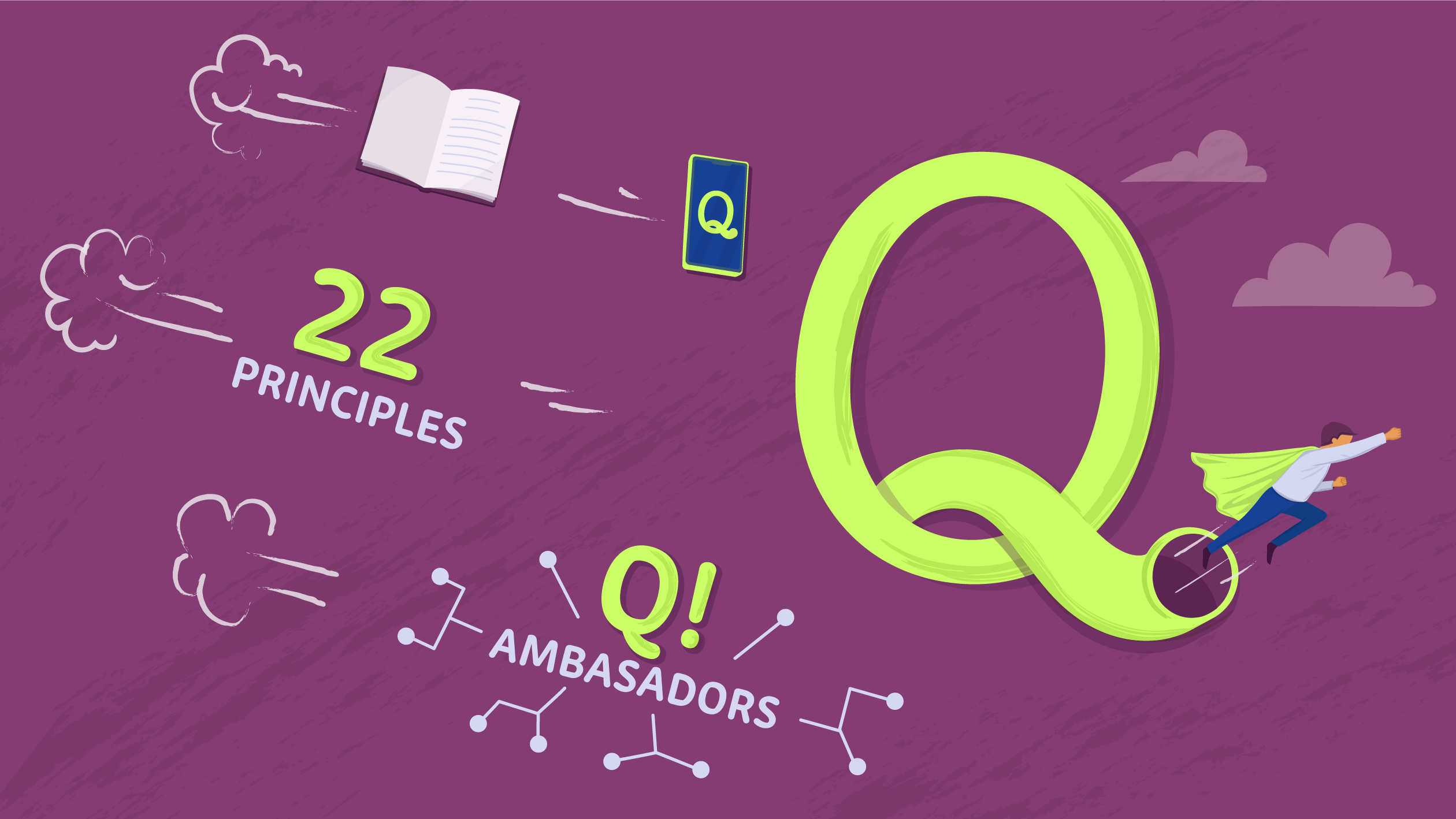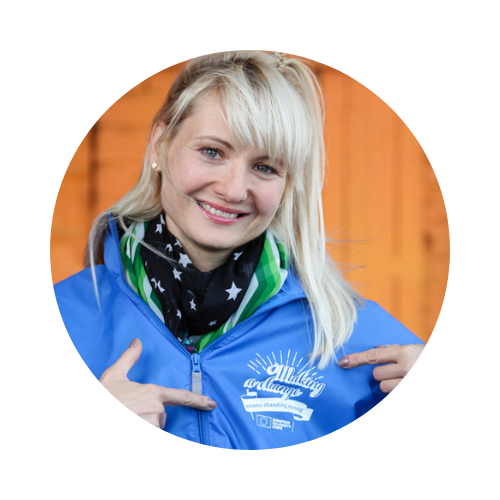
Illustration by Madalina Pavel (Picturise)
Quality in practice: paths enhancing youth learning mobility
by Marta Brzezińska-Hubert
It all started with three learning mobilities I participated in as a student: an Erasmus exchange, a Leonardo traineeship and the European Voluntary Service. Each with different objectives, in different places in Europe, in different educational settings. And all of them resulted in everlasting friendships and learning outcomes which inspired clarification of my values and led to life-changing choices. In 2004, I went in-person to the Polish National Agency office motivated to work for these programmes. I enthusiastically shared how much I had been impressed by all the projects I had participated in. Although there was no vacancy there at the moment, my genuine appreciation of the programmes’ quality soon led me to start my dream work as a trainer to keep learning and to facilitate the learning of others.
 A journey beyond borders to embrace
A journey beyond borders to embrace
At this time, my understanding of quality in learning mobility was very intuitive and personal. As a young person, I felt the meaning of my transformation and the support I received from people involved in this process. I experienced it completely, with my whole self: mind, body, emotions, senses and imagination, which were consequently, as Peter Jarvis (2006: 134) puts it, “integrated into my biography resulting in a continually changing (or more experienced) person”.
Some years later, while going deeper into learning theories, I wondered how to complement this intuitive approach to quality with a more structured one: which solutions and tools might support the quality of the mobility projects? And what do “learning mobility” and “quality” actually mean? With this article, I would like to take you on a reflection journey I went through to explore the paths of quality in youth learning mobility.
 Diversity of learning finds here a space
Diversity of learning finds here a space
The European Platform on Learning Mobility in the youth field (EPLM) is an open network, which brings together representatives of several international mobility programmes. These are Erasmus+ and European Solidarity Corps national agencies as well as regional and bilateral programmes that foster mobility of young people and youth educators in Europe. Thanks to its scope and diversity, EPLM creates a space for the exchange and co-operation of youth organisations, researchers, practitioners, policy makers and young people who aim to develop high-quality and sustainable learning mobility for all. According to the EPLM, the mobility of young people in the youth field, whether transnational, regional or online, is undertaken freely and voluntarily for a specific period. It impacts the local community and allows them to acquire new competencies or values. Although it is mainly organised specifically for educational purposes outside of formal education systems and curricula, it is essential to mention that the boundaries of learning mobility are fluid. As a multifaceted phenomenon, it encompasses a variety of project formats and activities involving different actors and stakeholders.
We may understand quality in many ways. Most generally, it may mean:
- how good or bad something is;
- a high standard;
- a characteristic or feature of someone or something. (Cambridge Advanced Learner’s Dictionary and Thesaurus)
As for me, I connect a lot with Charles Eames’ interpretation:
Eventually, everything connects – people, ideas, objects. The quality of the connections is the key to quality per se. (Eames Foundation)
It brings us closer to how quality is approached in the context of learning. Belash et al. (2015, cited in Vagarinho 2020: 104) describe quality in education as the conformity of outcomes, processes and environments to needs, objectives, requirements, norms and standards.
However, what about the interconnections between all these elements? How do we decide whose needs have to be addressed? What if they change over time? To what extent do our reflections, judgments, feelings and evaluations represent a common understanding of quality norms? And how can the quality criteria be defined in a process that is not linear and mechanical at all? In the words of Sir Ken Robinson (TED2010), the educational process is:
organic and unique for every young person. … You cannot predict the outcome of human development. All you can do, like a farmer, is create the conditions under which they will begin to flourish.
So, ensuring such fertile ground for fruitful learning of individuals and groups is crucial. Providing the “farmers” with guidelines and tools was one of the main aims of the team of experts developing the Quality Framework for Learning Mobility in the youth field. The process started in 2016 and was initiated and co-ordinated by the Steering Group of the EPLM co-ordinated by the Youth Partnership. As we can see above, recognising the diversity of learning from a broad scope of stakeholders is essential in defining quality and learning mobility. To ensure it, the proposals of working groups were shared with practitioners: project organisers, youth workers, young people who participated in mobility projects, Erasmus+ national agencies, researchers and policy makers. As a result, a set of two complementary tools was presented in 2019 to support quality in various forms of youth mobility: the Handbook on Quality in Learning Mobility and the Quality Mobility App (Q!App).
 Quality is to be experienced by you
Quality is to be experienced by you
Shortly after, I was introduced to the Handbook during the training for Quality Ambassadors and Multipliers: Q!Ambassadors. This is the network created by representatives of diverse youth work practices and geographical areas. Our main role is to offer expertise and practical support in using Q!App. We have also been developing ideas for promoting and updating the quality tools. What are these tools, and how have I been using them to boost the quality of diverse educational projects involving youth mobility?
Handbook on Quality in Learning Mobility
The idea of the Handbook is to ensure that quality is integrated into all stages of the mobility project, from design to evaluation. The Handbook offers a set of 22 principles, according to which one can assess the optimal potential of the project. The principles are:
practical hands-on guidelines, a tool for reflection, and not a set of binding rules that you must stick to. It is not a legal document. ... You will need to consider all your conditions, resources, etc. and adapt the principles accordingly. (Kristensen 2019)
Each principle corresponds to concrete indicators: actions or elements demonstrating how this principle may be met. Indicators are grouped into bigger sections and more general dimensions.
In my practice, I often interconnect the training objectives with relevant quality principles while preparing a training course. I also used the indicators in the session focusing on quality with the European Solidarity Corps co-ordinators.
Tools in practice
Let’s try something similar here! You can invite other members of your organisation to do it with you or a colleague from your partner organisation. You will need at least one more person to do this activity with.
1. Consider the quality area you want to develop in your organisation/project. Go to the Handbook and choose one section related to your focus (pp. 23-29).
2. Assess individually – on a scale from 0% to 100% – to what extent this section is represented now in your organisation’s practice. To go deeper, use indicators in the form of guiding questions. This will be your starting point – where are you now?
3. With your dialogue partner, share your quality assessments and explore:
- How do you imagine a 10-20% improvement in the quality of this section?
- What would be the result of this change?
- How will you get closer to your vision? What can you do?
- What can you start doing already this week?
In this kind of action planning, the next question is: “Who/what can help you make these first steps?” One of the easy-to-use solutions is a tool based on quality principles known mainly as Q!App.
Quality Mobility App (Q!App)
Q!App is an interactive, web-based application that is accessible from any device. The process of its development involved several experienced researchers, facilitators and youth workers, as well as institutions in the framework of the EPLM: SALTO Inclusion & Diversity, National Agency for Erasmus+ Youth and the European Solidarity Corps in Flanders, Belgium (JINT), Youth Partnership, European Solidarity Corps resource centre, and partner Erasmus+ agencies. Q!App includes resources, tips and tricks to bring more quality to everyday youth work practice. When I present the Q!App during tool fair sessions as a Q!Ambassador, youth workers and trainers are often surprised that they can find so much practical wisdom and quality boosters organised in a very structured and intuitive way in one place. Let’s see, what you can do with the Q!App:
-
Self-assess the Quality! of your international youth projects and compare your assessment with colleagues – a great start for raising awareness and discussions about quality.
-
Co-create a Quality! online with your partners: 16 logical project management questions will guide you through different project elements. Each section is directly linked with corresponding resources, so if you miss any specific knowledge or a method, you are just “one-click” from inspiration and potential solutions. You can also export your project for use in funding applications.
-
Find tons of practical resources anytime you need them at the various stages of your project: tips, videos, checklists, links and methods to encourage the development of your mobilities’ quality.
I have used this app in face-to-face and online partnership-building sessions to start working on joint projects. At first sight, inviting partners to create a mobility project with the support of quality tools seems to be particularly beneficial for newcomers in the youth field. I also believe that very experienced organisations can gain a lot by changing their known ways of developing projects and writing applications. Collaboratively going through questions connected with indicators, agreeing or disagreeing on their importance or priority brings new perspectives and highlights the areas for improvement. To start using it, you can explore the Q!App yourself or watch a step-by-step introductory webinar: Quality Tools for Dummies.
 In search of competence, both old and new
In search of competence, both old and new
The Covid-19 pandemic enlarged the scope of learning mobility formats and impacted the needs and values of young people and educators. During that challenging time, members of the EPLM network took several steps, publishing new resources, conducting research and working on updates of the quality tools to respond to this changing reality. The revised version of the Handbook has been complemented with key quality areas: sustainability, value-based learning in mobility projects, digital transformation and mental health (the indicators related to them replaced some of the latter ones so as not to increase their total number). And then, the joy from the long-awaited recovery from “immobility” was interrupted by Russia’s war against Ukraine. The need to feel the power of the community and mutual support in the form of in-person meetings became even more vital than ever.
That was when I joined the EPLM Resource Group as a representative of Q!Ambassadors and got involved in preparing a set of events celebrating the restart of learning mobility. In the 2022 European Year of Youth, the Pop the Bubble campaign was initiated and run by JINT and Jugend für Europa and partners in the EPLM to boost the quality of learning mobility projects. In June 2022, the community of young people, facilitators, youth organisations and policy makers, slowly returning to face-to-face activities, met online at the Pop the Bubble launching event. Participants shared their best practices of diverse learning formats and got updates about Q!Tools and tips on using them. That was also an opportunity to go deeper into four quality areas that complemented the Handbook. The summaries and visual recordings of these sessions are part of Q!App resources and may bring you new ideas on how to:
- green up your mobility projects and understand better the holistic approach to sustainability;
- get in reflective and critical dialogue with your values as a youth worker/youth leader/trainer exploring value-based learning in mobility projects;
- make the best use of online, hybrid and blended learning as a result of digital transformation;
- deal with uncertain times and make the best of learning mobilities to support young people’s mental health and boost your resilience.
Tools in practice
I have also used practical tools connected with those areas in training and conferences. For instance, have you ever discussed with your colleague educators about not being value-neutral in your work? Which methods can you use to bring the topic of personal and European values for discussion with the participants? It has often been the case for me, and I was excited to get some “thought-provoking” questions from the Youth Partnership’s T-Kit 14. For example: “Should a facilitator bring in their value-based responses during a learning session” (p. 112) or “Is it possible to be empathetic towards every single human being?” (p. 54). I have been integrating those questions whenever it is crucial to listen and to understand the perspectives of every participating person, for example, by using the deep democracy method.
Another tool I returned to regularly while organising an educational event is the Sustainability checklist published by the Youth Partnership. It helps me, in an obvious way, to put into practice the climate-related program priorities in the context of learning mobility.
 Mobility with a view
Mobility with a view
The process of defining learning mobility quality in the youth field continues to be open for further developments and adaptations according to specific contexts, goals and needs. In February 2022, the Sustain-Mobility conference brought together over a hundred practitioners, staff members of national agencies, researchers, entrepreneurs, policy makers and young people to examine this critical topic from various angles. I was there both as a participant and as an EPLM member supporting some sessions of the conference. During this event, I realised even more that I am a part of a complementary system. I experienced the feeling of quality as a receiver and as an active co-creator with other members of that vivid community.
I keep this feeling as my strong “why?” motivator in my work, although maintaining this motivation is not always easy. I wish this high quality of the youth work was more recognised by governments, the business sector and civil society. I wish that all people involved in the organisation and facilitation of mobility projects receive more support from other sectors to boost the quality of their activities. Still, what I wish for the most refers to myself: to take care of quality here and now and be ready to respond to future chances and challenges. If you share my concerns, you might find it helpful to check out some of my ways to put quality into practice. I recommend you to:
- use Q!Tools: the Handbook and Q!App in diverse ways;
- discover more about the research, publications, newsletters and other resources connected with the quality of learning mobility on the EPLM page;
- join a series of seminars, training courses and networks which enhance the quality of international youth work;
- on a more local level, join or set up a community of practice of project co-ordinators, trainers or mentors with a focus on quality.
As wise people say, those with their “why” will also find “how”. I encourage you to try one of my “hows” that inspires you the most – so we keep going on the quality path together.
 References
References
Eames Foundation: https://eamesfoundation.org/house/charles-and-ray/.
EU-Council of Europe, Restarting youth learning mobility – quality tools in practice UNDER 30’podcast by Youth Partnership, available at: https://pjp-eu.coe.int/en/web/youth-partnership/podcasts, accessed 11 December 2023.
European Platform on Learning Mobility: https://pjp-eu.coe.int/en/web/youth-partnership/european-platform-on-learning-mobility.
Illeris K. (ed.) (2009), Contemporary theories of learning: learning theorists … in their own words (1st edn), Routledge, London and New York.
Jarvis P. (2006), Towards a comprehensive theory of human learning, Routledge, London and New York.
Koch S. (ed.) (2023), T-Kit 14: value-based learning in mobility projects, Youth Partnership, available at: https://pjp-eu.coe.int/en/web/youth-partnership/t-kit-14-value-based-learning-in-mobility-projects, accessed 11 December 2023.
Kristensen S. (ed.) (2019), Handbook on quality in learning mobility, Youth Partnership, Council of Europe Publishing, Strasbourg, available at: https://pjp-eu.coe.int/documents/42128013/47261953/Handbook+LM/3a5c103c-0367-4eba-1aca-ee544826f557, accessed 11 December 2023.
Robinson K. (2010), Bring on the learning revolution! , TED Talk, available at: www.ted.com/talks/sir_ken_robinson_bring_on_the_learning_revolution/, accessed 11 December 2023.
Vagarinho J. P. (2020), “Quality in learning: what should contain the definition?”, Revista EDaPECI Vol. 20, No. 1, pp. 103-118, available at: www.researchgate.net/publication/340521109_Quality_in_learning_what_should_contain_the_definition, accessed 11 December 2023.

Marta is a trainer and facilitator based in Warsaw specialising in intercultural and non-formal education, learning mobility, volunteering, youth entrepreneurship.


